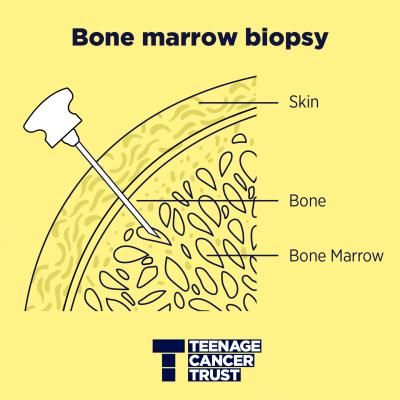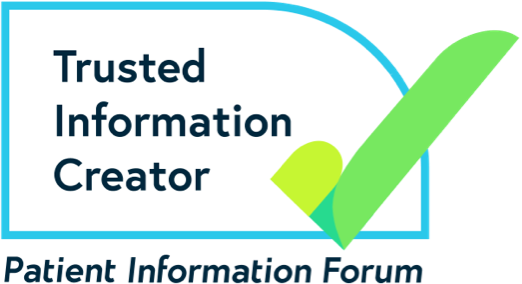Bone marrow and stem cell transplants
Find out more about different types of transplants, what they’re used for and any side effects you might experience.
You are viewing: What's involved?
- Bone marrow and stem cell transplants are usually used to treat cancers like leukaemia and lymphoma
- They can also be used to treat solid tumours
- Having one of these transplants means doctors can give you a higher dose of chemotherapy
Why would I need a bone marrow or stem cell transplant?
Having a bone marrow transplant or stem cell transplant means doctors can give you a higher dose of chemotherapy. The aim of high-dose chemo is to create the best possible chance of killing off cancer cells in your body. Giving you stem cells or bone marrow via a transplant afterwards means your body can start creating healthy blood cells again after the chemo.
What's involved?
High-dose chemo usually takes five or six days – sometimes less, sometimes more. You might also have radiotherapy to kill any remaining cancer cells. Your bone marrow or stem cell transplant takes place afterwards.
What happens when you have a bone marrow transplant?
- the bone marrow you receive has to be taken from your donor before it’s transplanted into you
- the bone marrow you receive has to be a close match to yours, so might be taken from a close relative like a brother or sister
- they will have their bone marrow taken under general anaesthetic so they won’t feel any pain during the procedure but they will need some time to recover afterwards
- before the bone marrow is transplanted into you, you will need to have high dose chemo
- once you have had this you will have the donated bone marrow transplanted into you using a drip (an intravenous (IV line) that goes directly into a vein, as you can see in the picture below)
You can find out more about transplants from siblings on Anthony Nolan’s website.
More info:

Bone marrow is the soft, spongy tissue that’s found inside some of your larger bones. During a bone marrow biopsy (sometimes also called a ‘bone marrow aspirate’), a sample of your bone marrow is taken and examined under a microscope.

Bone marrow is the stuff inside your bones that makes blood cells. Stem cells are the cells made by your bone marrow, that develop into blood cells.

IV is short for intravenous, which means ‘into the veins’. IV lines are used to get medication and liquids delivered straight into your blood stream.
What happens when you have a stem cell transplant?
Stem cells for a transplant are usually collected from you, but can be collected from someone whose cells closely match yours – normally, but not always, a relative. Stem cells can be collected from your bone marrow or from blood. If your own cells are being collected, drips are attached to both of your arms. Blood is taken from one arm, filtered through a machine to collect stem cells, and then pumped back into your other arm. The cells are then frozen and given to you, via a drip, after your chemo.
You can find out more about stem cell transplants on the Anthony Nolan website.
What do these transplants do?
Chemo is a drug treatment and works by attacking and destroying the cells that cause cancer. You can read more about this in our chemotherapy section.
High-dose chemo is more likely to kill cancer cells, but will also damage more of your bone marrow (the stuff inside your bones that makes blood cells) and your stem cells (the cells, made by your bone marrow, that develop into blood cells). So bone marrow or stem cell transplants are used to replace what’s destroyed by the chemo.
What happens next?
Having a stem cell transplant lowers your blood cell levels and affects your immune system, which means you’re at a greater risk of picking up infections. So when you’re admitted for your chemo and transplant, you’ll be moved to a single room in the hospital for a few weeks – where there’s less chance of getting ill.
This can feel pretty boring. You can usually have visitors, but often only one or two a day. There are things you can do to make your room feel more like home, though – put up photos, get people to write messages for you in a visitor book, bring in things you usually have in your bedroom.
What are the possible side effects?
Having a bone marrow transplant or stem cell transplant can have side effects – but most of these are caused by the high-dose chemo, rather than the actual transplant. Potential side effects include:
Infections and immune system
The chemo reduces your white blood cell count and immune system, increasing the risk of infection. Your nurses will let you know about food to avoid or be careful with. Your sheets will be changed and your room will be cleaned daily to reduce the risk of infection. And if your visitors aren’t feeling well, they’ll need to stay away until they feel better to reduce the chance of you getting ill.
Anaemia
Anaemia is caused by a drop in red blood cells and it can leave you feeling wiped out – short of energy and short of breath. Your nurse will keep an eye on your red cell count. If it’s low you might be given a blood transfusion which should give you an instant boost. Some people do react to blood transfusions, though, so if you feel hot, shivery or itchy while it’s happening, let your nurse know.
Bleeding
High-dose chemo kills more of the platelets that help your blood to clot, so you might notice blood when you’re not expecting it. If you see blood when you go to the loo, or if you have a nosebleed, bleeding gums, bruises or red spots on your skin, let your nurses know. You might need to have a platelet transfusion, given to you through a drip.
Infertility
High-dose chemo can impact your fertility (ability to have children). While having children might be the last thing on your mind right now, it’s still a good idea to chat through your options with doctors before starting treatment.
You might be able to have your sperm or eggs stored so they can be used in the future. It might feel a bit uncomfortable talking to your doctor about these kind of things but they have conversations like this all the time and should be ready to answer any questions you have. Find out more about fertility. Find more information on egg freezing and sperm banking here.
Graft vs Host Disease
If you have a transplant from another person, immune cells from the donor cells you’ve been given can sometimes attack your own cells – this is known as Graft versus host disease (GvHD). The new cells get confused, think your cells are infected cells, and attack them.
GvHD can start soon after a transplant or several months later. If it starts within three months, symptoms can include red spots on your skin, a high temperature, watery diarrhoea, stomach cramps and jaundice (where you skin, or the white parts of your eyes turn yellow).
If it starts after three months, you might get an itchy rash, skin that feels hard, a dry mouth or dry eyes, or hair falling out. Chronic GvHD can affect any of your organs, so let your doctors know if you have these or any other symptoms.
Other chemo effects
You can read about common chemo side effects in our chemotherapy section. But some of the main ones include diarrhoea, sickness, having a sore mouth, not wanting to eat or drink, and feeling really tired. They can be pretty unpleasant – but should start to pass once the levels of blood cells in your blood get closer to normal.
Questions to ask
Never be afraid to ask questions about your cancer. And if you don’t understand the answers you get you can always ask them to explain it again, or in a different way until you do understand.
If your doctor recommends a transplant, you might like to ask:
- Why is a transplant is being recommended?
- Will I need chemo and radiotherapy?
- What side effects might I have? And, how can I reduce them?
- How effective is the transplant likely to be?
- How long will I be in hospital?
- Will the transplant affect my fertility?
- Are there any other treatments might work?
You can find lots more information about stem cell transplants on the Anthony Nolan website. You can also sign up to join the stem cell register too.
This information was reviewed in 2024. It will be reviewed again in 2027.

PIF TICK accredited information
The Patient Information Forum is the UK membership organisation and network for people working in health information and support. The PIF TICK is the UK-wide Quality Mark for Health Information.

